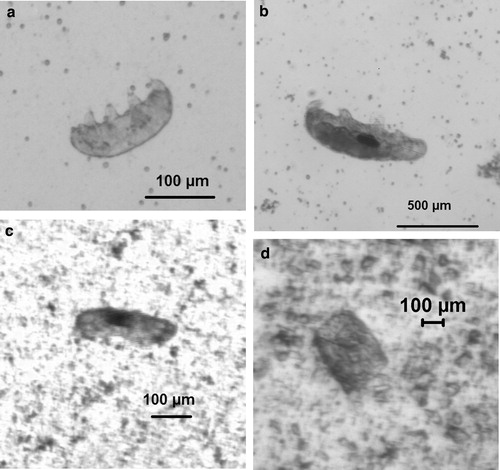
This post was written by Rio Wakura, a first-year business-economics student at University of California, Los Angeles. She is passionate about journalism with her work in Daily Bruin and Her Campus at UCLA. In her free time, you can find her exploring new dessert spots in LA or playing the violin.
Authors: Alejandra Traspas, Mark J. Burchell
First Author’s Institution: Centre for Astrophysics and Planetary Science, School of Physical Sciences, University of Kent, Canterbury, UK.
Status: Published in Astrobiology, Mary Ann Liebert Inc. (Open Access)
Some organisms can survive extreme conditions. Tardigrades are one of these creatures, having the ability to survive in extreme conditions including cold climates, vacuums, and high radiation. But can they survive an extraterrestrial impact? Can they travel from one planet to another without burning up and being crushed?
Scientists have been searching for the answer to this question for decades now. Although previous studies have indicated that survival rates are low for tardigrades traveling through space, today’s paper suggests that tardigrades may be able to survive if they are initially moving slow enough.
Is panspermia a real thing?
You may have heard of the word “panspermia” before. What does it mean exactly? This concept refers to the transportation of life from one place to another through space. Today, we are going to focus on a particular model of panspermia called “lithopanspermia”. With litho- meaning “stone” in Greek, lithopanspermia suggests that living organisms can be transported from one place to another by being launched in a rock.
Previous studies have already tested if tardigrades can survive in space. So far, we know that tardigrades can survive raw exposure to space—great! But we still need to know whether tardigrades can survive active impact shocks; can they survive the impact of the launch when fired at a target? Will they break into pieces before they land? Even if they survive the landing, can they reproduce? Do they count as life if they cannot reproduce?
The authors of today’s paper, Alejandra Traspas and Mark J. Burchell, address these questions and suggest that lithopanspermia is possible under certain niche environments and initial launch conditions.
Shock pressure as a survival metric
Traspas and Burchell’s ideas are built upon the past research of several authors. Burchell discussed in 2001 the maximum impact speed and peak shock pressure that microbes can survive through, and investigated in 2007 how survival rates will start to decrease beyond the maximum speed and pressure.
In their most recent study, they not only measured survival rates during impact but also measured recovery rates after the impact. Authors followed the ethical rules for invertebrates, treating tardigrades with care. This was a big difference from previous studies where almost all tardigrades died after the experiment.

After simulating harsh space conditions for tardigrades in a vacuum, authors found that tardigrades cannot survive most shock pressures that they would encounter in planetary landings. But tardigrades launched from some planets to their moons survived because their launch speeds were low enough to only exert small pressures. Hope is not completely lost!
Panspermia is possible! But only in niche environments…
Tardigrades that recovered after impact often survived in fragments instead of as one big whole. Authors suggest that this was because they were broken apart from high impact pressures.
Tardigrades that were launched in ejecta took longer to recover to an active state than frozen samples. Authors inferred from this that impact shock had a more significant effect on tardigrade survival than cold climates. Greater impact speeds lead to greater shock pressures, which lowered survival rates. Authors were able to use this data to calculate vertical impact speeds that tardigrades can survive through. They found that tardigrades launched from niche environments like a planet to its nearby moons have low vertical launch speeds that allow them to survive without getting crushed with high impact.

Since Jupiter and Saturn frequently launch plumes onto its icy moons, authors proposed a flyby spacecraft mission near the moons’ orbits to collect and study plume samples for future research.
Although this new experiment showed us that lithopanspermia may be possible in some environments, we can’t quite jump into conclusions yet. We should run this simulation again with a bigger sample size. Bigger debates about the meaning of life are still at play, with some critics arguing that panspermia isn’t panspermia if the tardigrades do not reproduce successfully after impact. Thus, we can look forward to future experiments that assess tardigrade reproduction rates following space travel. But we cannot deny that this new study just opened up new possibilities for extraterrestrial transportation and origins of life.
Astrobite edited by Sumeet Kulkarni.
Featured image credit: livescience.com





Intriguing . . .